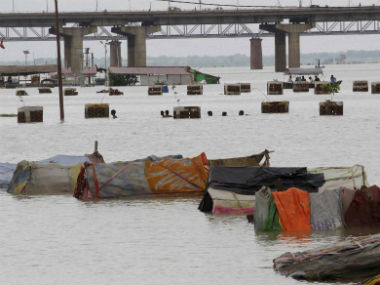The Uttarakhand High Court recently declared rivers Ganga and Yamuna as living entities — a first of its kind recognition in India. This move is likely to redefine the existing laws to protect the environment in India. The parliament of New Zealand, also recently passed a bill, granting same legal rights as a human being to River Whanganui. It was a case of removal of encroachment from the river’s floodplains, a common phenomenon in the catchment areas of Uttarakhand, which was one of the major reasons that led to the huge loss of property and human lives during the 2013 floods. Ganga and Yamuna now have been reduced to a deteriorated form of life as a result of dumping of sewage, building dams and diverting their natural flow and illegal mining. [caption id=“attachment_2897438” align=“alignleft” width=“380”] Representational image. PTI[/caption] The newly appointed chief minister of Uttarakhand, Trivendra Rawat, is the national convener of the Narendra Modi government’s Ganga cleaning project ‘Namami Gange’ that includes concepts like ‘aviral’ (unhindered) and ‘nirmal’ (unpolluted) Ganga, but studies claim that Ganga’s water, flowing after Rishikesh, is not drinkable. Around Rs 20,000 crores have been pumped in by the Union Cabinet for cleaning up Ganga over the next five years. Twenty projects worth Rs 1,900 crores have been approved for swift implementation of ‘Namami Gange’ but the results are yet to show. According to the website of the
Uttarakhand Jal Vidyut Nigam Limited, 45 hydro-power projects with a total capacity of 3,164 MW are operational in the state, and 199 big and small projects have been proposed or are underway in the state. As per the information available on the
website of pollution control board, each day, in the Ganga basin approximately 12,000 million litres per day (mld) sewage is generated but there is treatment capacity of only around 4,000 mld. Waste water from sewage, domestic and industries, dumped directly into the river is a massive health hazard to not only to 500 million humans residing in the river basin but also affecting the aquatic and natural habitat. Treatment capacity of about 1,000 mld has been created till date. In the last 30 years, the government started the Ganga action plan-1 in June 1985 that was closed in March 2000 after investing a lot of money. Later, the government rolled out Ganga action plan-2 in 1993 and it was closed in 2009. In February 2009, the government had established the National Ganga River Basin Authority (NGRBA) that included, augmentation of sewerage infrastructure, catchment area treatment, protection of floodplains and creating public awareness. It also declared Ganga as “the national river of India”. The chair included the prime minister and the chief ministers of the state through which the Ganga flows. In 2011, the World Bank approved $ 1 billion in funding for the (NGRBA), but there was no improvement in the river’s condition. In 2010, the government declared the stretch of river between Gomukh glacier and Uttarkashi as eco-sensitive zone. In July 2014, the Modi government launched an integrated Ganga conservation mission called, ‘Namami Gange’ with a budget of Rs 2,037 crores. In addition, Rs 100 crores have been allotted for the development of the ghats and beautification of rivers. All departments concerned have been working together for the appropriate implementation of the plan. On the other hand, around 57 million people depend on the River Yamuna. Though 70 percent of Delhi’s water supply comes from the Yamuna, Delhi alone contributes to around 3,296 mld of sewage in the river. Under the Yamuna Action Plan (YAP) in 1993 by National River Conservation Directorate (NRCD), cleaning measures were taken up with the help of Japan government. It took place in three phases and lasted till 2015 with an investment of Rs 1,656 crores. The Energy and Resources Institute reports claim that though the results of YAP weren’t 100 percent successful, but the water quality has not further deteriorated. Ganga and Yamuna have been at the centre of people’s faith and was already a living entity in the heart of the common folks but this decision can influence and resurrect the desensitised machinery that couldn’t contribute much to its rejuvenation and free flow.
The Uttarakhand High Court recently declared River Ganga and Yamuna as living entities — a first of its kind recognition in India.
Advertisement
End of Article


)

)
)
)
)
)
)
)
)



